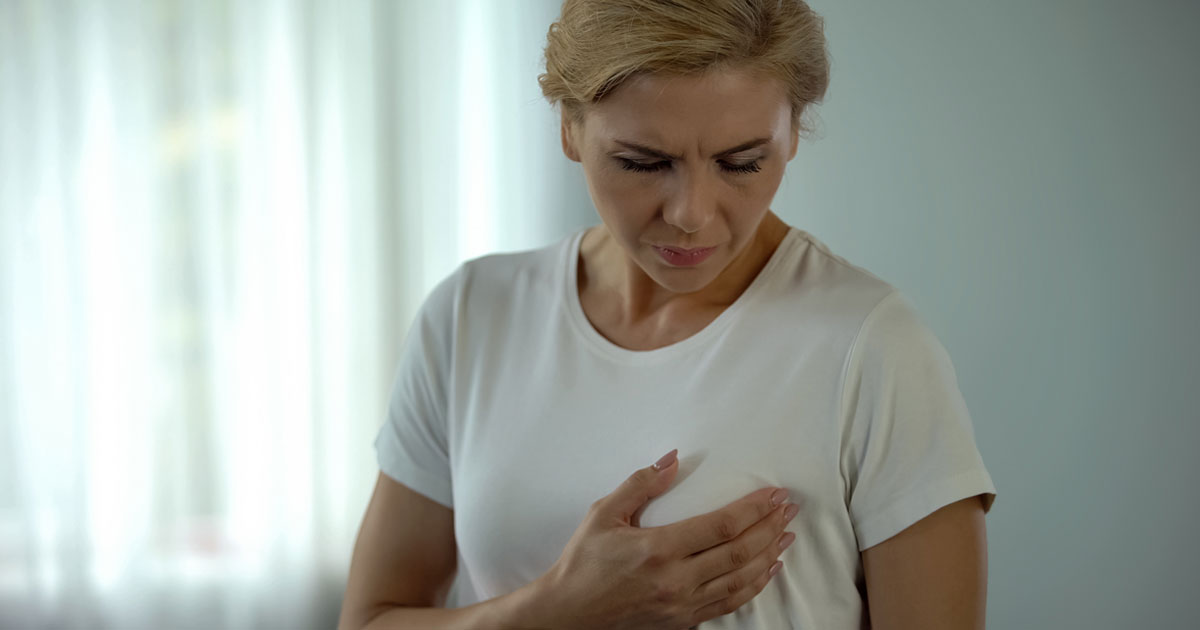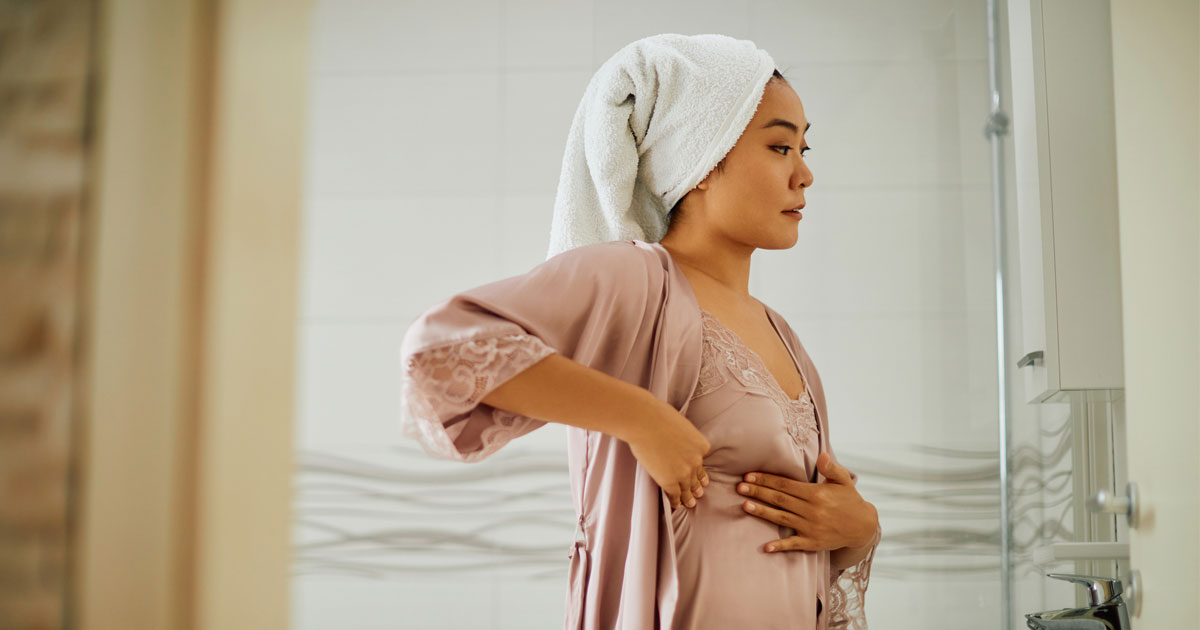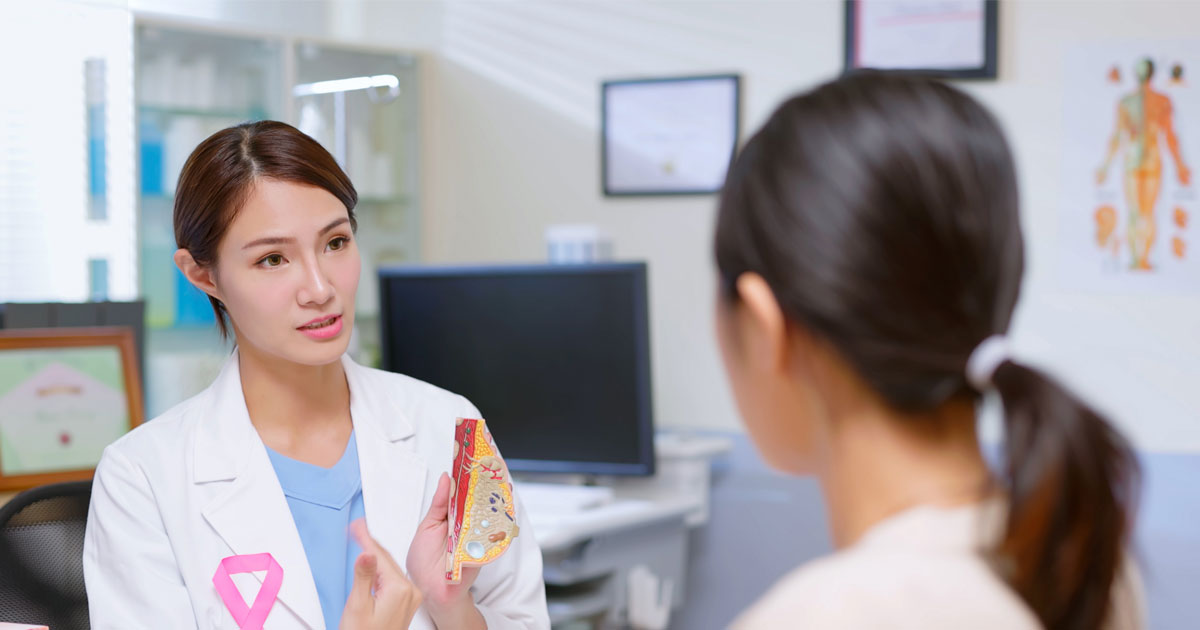Table of Contents
ToggleYour personal health should be a top priority. No matter what your lifestyle may be, it is important to make sure you are protecting yourself from major health risks and diseases whenever you can. This can help you live a longer, healthier, happier life.
Breast health is a major aspect of your wellbeing, and if you have breasts, you should be sure to monitor them regularly. This can help you and your physician catch any abnormalities or concerns early, when you may be able to prevent serious issues from developing. Unfortunately, people with breasts are not always given the proper tools and resources to take care of themselves. This lack of information or direction can lead to serious health problems that can even be life-threatening if left untreated.
There are several easy ways for you to take care of your breasts from the comfort of your own home. By doing so, you are taking charge of your health and wellness and improving your chances of catching any issues before they become serious.
Basic Facts About Breast Health
Breast cancer is a serious issue all over the world. Unfortunately, many patients develop symptoms of breast cancer without realizing it. This can lead to delays in diagnosis or even misdiagnosis depending on the circumstances. It is vitally important for everyone with breasts to understand what is normal and what is not when it comes to breast health and wellness.
We’ve assembled a list of normal breast conditions you should experience regularly. If your breasts deviate from these benchmarks, you should schedule an appointment with your doctor or with a specialist to investigate your breast health.
Breasts Remain Constant
Unless you are pregnant or breastfeeding, your breasts should not change much. However, keep in mind that it is difficult to say how your breasts should look or feel, because everyone’s body is different. While some people should be alarmed if their breasts become lumpy, others have developed naturally lumpy breasts due to perimenopause or other normal conditions. Remember: breast health is not one size fits all.
You know your body best, so the best way to establish a healthy breast benchmark is to assess your breasts and get an idea of how they look and feel. Then, understand that the look and feel of your breasts should remain the same. If you notice sudden changes, you should schedule an appointment with your doctor.
Standard Temperatures

Your breasts should remain at roughly the same temperature as the rest of your body. If you notice that your breast or part of your breast is warm to the touch, it may be a sign of inflammation. Inflammation can indicate mastitis or other concerning conditions. On the other hand, inflammation may simply be a sign of a pulled muscle in your chest or similar.
Regardless of the scenario, be sure to see a physician if you notice a temperature difference between your breasts and the rest of your body. Similarly, schedule an appointment if there is a lasting temperature difference from one part of your breast to another. Though it may not be a serious situation, it is best to be safe and have it checked.
Normal Nipple Conditions
Most people do not discharge any fluid from their nipples unless they are currently or have recently been breastfeeding or pregnant. If you notice discharge when you have not recently been pregnant or breastfeeding, you may want to consult with your doctor. If you have bloody nipple discharge, you should see a doctor right away whether or not you are pregnant or breastfeeding. Blood discharged from the nipples is never normal and should always be cause for concern.
No Armpit Swelling
The breasts and armpits are not only located near one another—they are also closely linked. Your armpits are the site of several lymph nodes. When you are sick or fighting disease, your lymph nodes often become swollen, inflamed, or sensitive. Under normal conditions, the lymph nodes in your armpit should not cause pain, tenderness, or any other issues.
If you notice swelling in your armpits, it may be a sign that something is happening in your breasts. This is a key indication that you should see a doctor, especially if the issue persists for more than a few days.
Remember: Breasts Can Hurt
Many people believe that pain is an automatic indication of a problem. However, this is not always the case. If you experience breast tenderness or pain, it is likely nothing to worry about. Many people experience breast pain during and before menstruation. Clothing and increased activity levels can also cause some breast pain. Usually, minor breast pain has a simple and innocuous cause.
If you notice that you are experiencing breast pain that is not related to menstruation, or your breast pain only affects one breast and not the other, you should see a doctor. A localized examination may help to rule out problems.

Perform a Self-Breast Exam
One of the best ways for you to keep your breasts healthy is by performing a self-examination on your own breasts. Because you have intimate knowledge of your own body and easy access to your breasts, a self-examination can alert you to any changes or concerns that may arise. As mentioned, every body is different, and you know yours best.
While your doctor will examine your breasts at least annually, you should check your own at least once per month. Many people opt to do their breast exams while they are menstruating, as it is a good reminder that it is time to check in. However you would like to schedule your self examinations, just remember to be thorough and perform an exam once per month.
How to Perform a Self-Breast Exam
It is not only important to perform regular breast examinations, it is also important to do them correctly. If you have never been taught how to properly examine breast tissue, you may miss key indicators of serious disease.
Step 1: Choose a Position
You can perform your breast exam in several different positions, depending on what is more comfortable for you and what gives you easiest access to all of your breast tissue. Each option is equally beneficial.
Laying Down
When you lay down on your back on a bed or on the floor, your breast tissue will naturally spread out across your chest. This gives you equal access to all areas of your breast and allows you to be thorough. However, some individuals prefer to see what they are doing, and laying down may not give you a sufficient vantage point.
Standing
When you stand for your breast exam, you will need to be able to raise your arm over your head so it is important to perform your exam in a space where there is room to assume this position. Standing allows you examine your breasts in their natural position, where it can be easier to determine what feels normal and what does not.
Shower
Many people opt to perform their breast exams while standing in the shower. Though the process is the same as standing anywhere else, the shower offers a private location where the breasts are already exposed. The warm water and soap can also be gentle on the skin, and allow the process to be more comfortable.
No matter the position that you choose, be sure you are able to perform a thorough check of your breast tissue.
Step 2: Inspect Visually
The first step for a breast exam is to inspect your breasts visually. Use a mirror in a room with good lighting. You should be looking for shape changes, dimpling, or swelling. Please note that most people have breasts that are asymmetrical. A difference in size between your two breasts is not a concern unless the difference has changed drastically since your last exam.

Step 3: Inspect Manually
When you have finished your visual exam, you can begin to inspect your breasts manually. Begin with light pressure and move around your breast tissue in a circular motion until you have inspected all areas. Repeat this with medium and then heavy pressure to ensure that you have assessed all areas of your breast. Perform the entire process again with your arm raised, then move on to the other breast.
You should be looking for lumps, abnormal areas, discharge, nipple redness, or spots that have changed since your last breast exam. If you feel something strange or abnormal that concerns you, schedule an appointment with a clinic or doctor’s office to have it examined. Though it may ultimately be something innocuous, it is always better to be safe than sorry.
Why Inspect Monthly?
Some people wonder monthly breast exams are necessary. The fact is, breast cancer and other diseases can be aggressive, and a significant amount of change can happen in as little as a month. Monitoring over time can also help clue you in to slower changes in your breasts. What’s more, these examinations are free and very easy. It only costs you about five minutes of your time, and there is no invasive testing or inconvenient doctor’s appointments. A self-breast exam is free, simple, and a great way to take care of your health and safety.
You should still continue to get regular physical exams and mammograms done by a doctor in accordance with your age and health status. Self-inspections should not replace professional care, but they can help you catch issues early, while they are still treatable. If you neglect caring for your body and breasts, a minor concern can quickly develop into a life threatening conditions that is both painful and costly to manage.

Trust Arizona Gynecology Consultants
The professional team at Arizona Gynecology Consultants is here to support you in breast and overall health. We are passionate about providing accessible, approachable healthcare, and we look forward to supporting you in your journey. For more information, please contact us online today.

Nurse Practitioner
Fulfilling her dream of becoming a nurse practitioner Nikkeya Boyd joined Arizona Gynecology Consultants in 2019. She completed her undergraduate studies at the University of Missouri in St. Louis and her graduate work at Grand Canyon University graduating in 2018.


